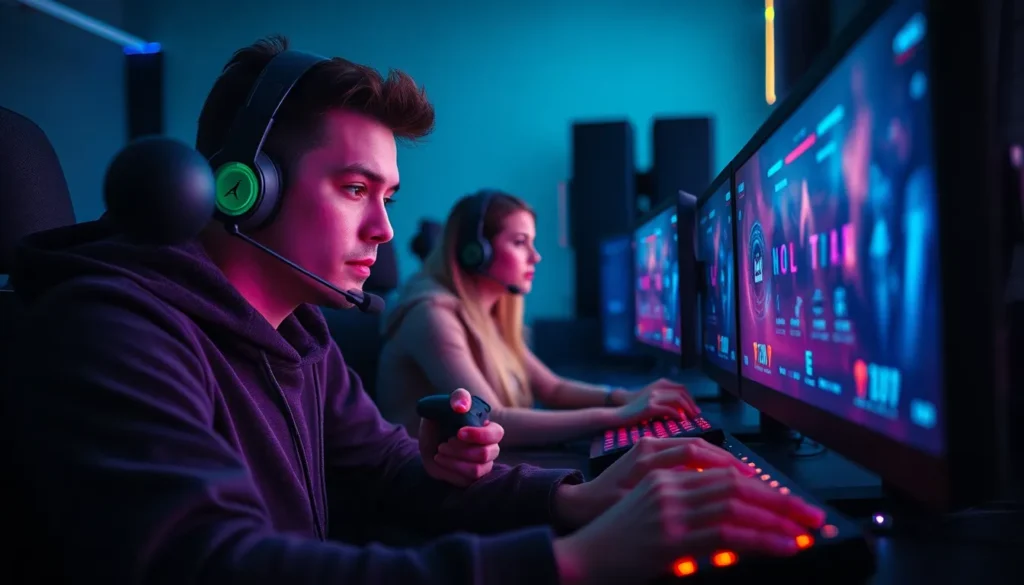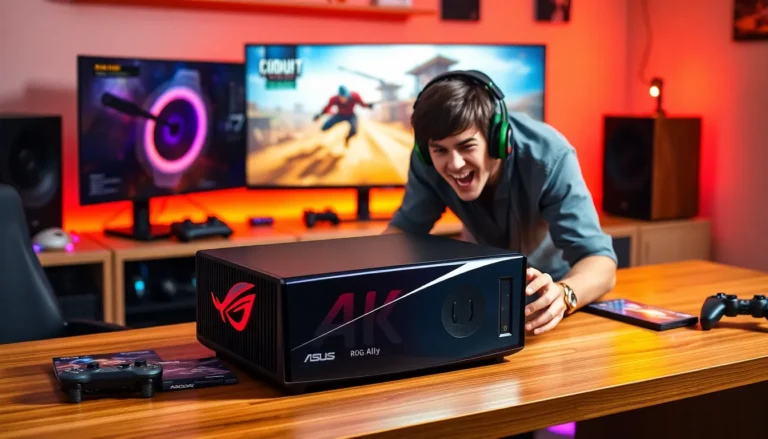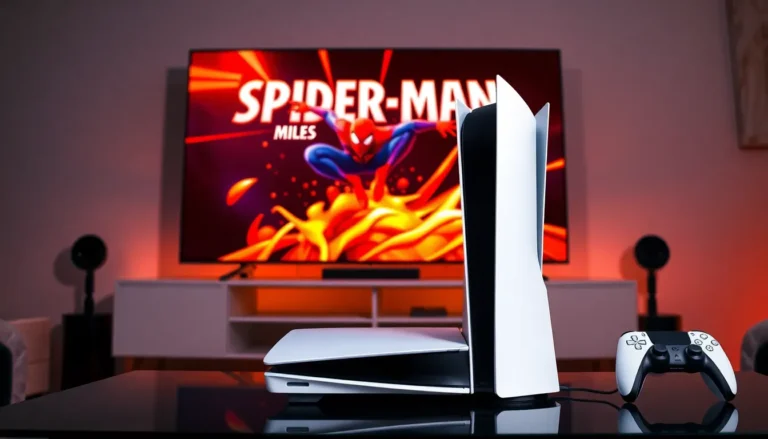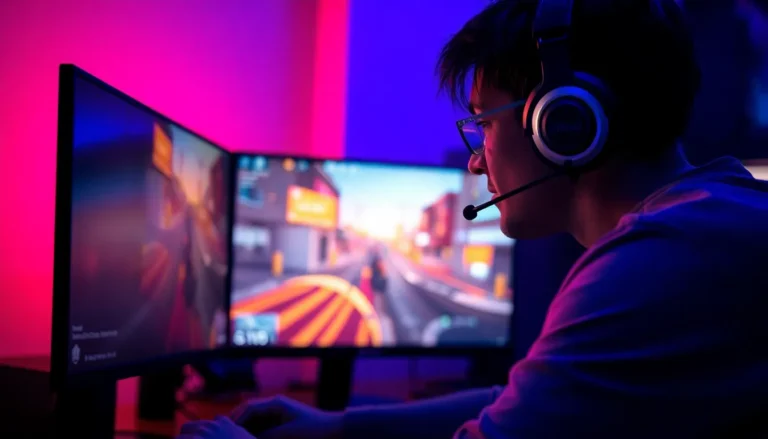In the fast-paced world of first-person shooters, every second counts. Gamers rely on split-second decisions, and the killfeed plays a crucial role in keeping players informed and engaged. But let’s be honest—if the killfeed looks like it was designed in the dark ages, it can ruin the entire gaming experience.
Table of Contents
ToggleOverview of FPS Killfeed Design
Killfeed design in first-person shooter games plays a critical role in player engagement. A well-structured killfeed provides clear information about player performance and ongoing match dynamics. Color schemes enhance usability by making kills, deaths, and assists easily distinguishable.
Positioning impacts visibility. A killfeed positioned at the screen’s top or bottom ensures it doesn’t obstruct gameplay while remaining easily viewable. Font styles and sizes contribute to legibility, with bold types enhancing critical information.
Animations add flair. Smooth transitions between kills or deaths create a sense of action. Additionally, sound effects can heighten awareness, drawing players’ focus to important events.
Customization options allow players to tailor their killfeed experience. Many games offer settings for adjusting transparency or modifying what appears in the killfeed. Such options enhance personal enjoyment and allow players to prioritize information that matters most to them.
Design phases must involve player feedback. Player testing can reveal preferences for killfeed duration and content. Adjusting based on this input increases satisfaction and overall enjoyment.
Effective killfeed design aligns with game mechanics. A design that reflects in-game actions helps maintain immersion and ensures players understand their contributions to match progress. Overall, a thoughtfully designed killfeed enhances not just the tactical aspect of gameplay but also fosters a sense of community among players.
Importance of Killfeed in FPS Games
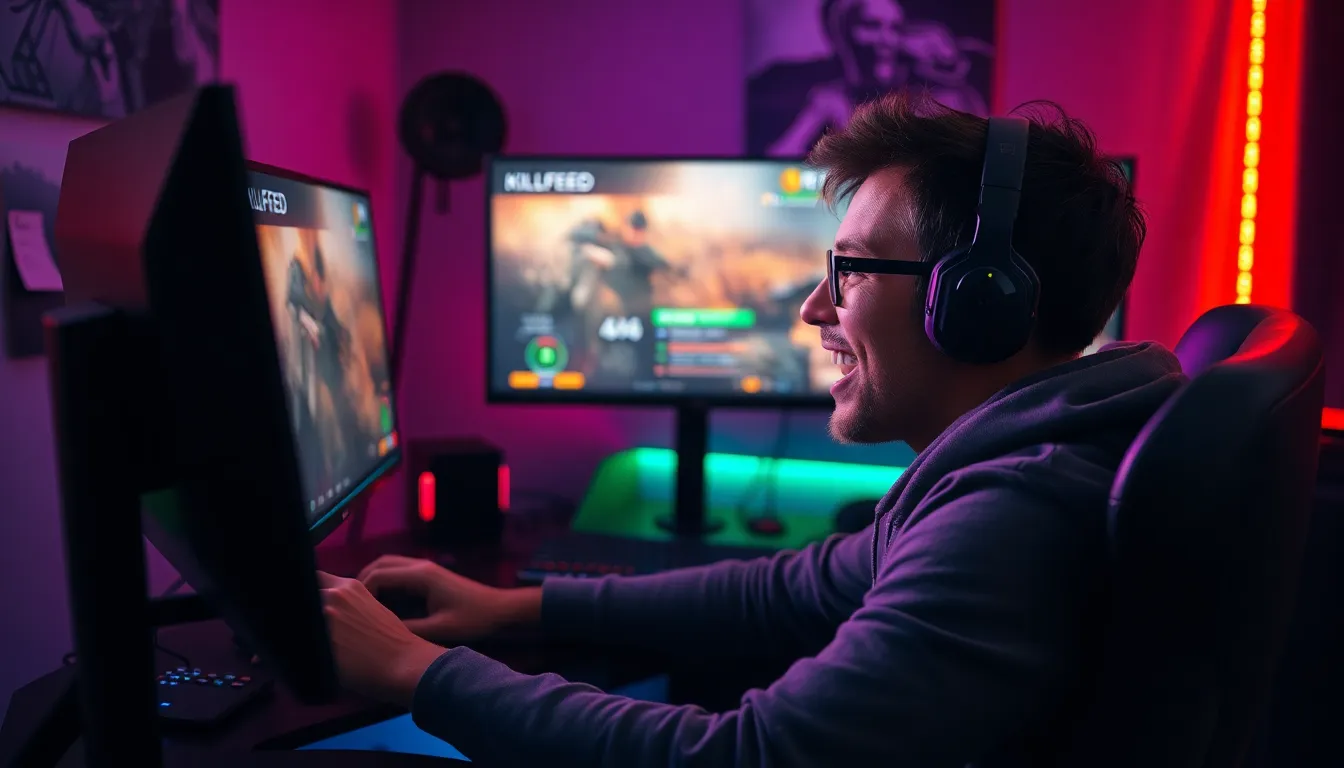
The killfeed plays a crucial role in first-person shooter games, ensuring players remain informed during the intense pace of matches. An effective killfeed design fosters engagement and clarity, essential for navigating the complexities of gameplay.
Enhancing Player Experience
A well-crafted killfeed significantly elevates player experience. It serves as a quick reference for player performance, showcasing achievements and contributing to competitiveness. Information displayed in real-time helps players react promptly and adjust strategies. Customization options allow individuals to adapt the killfeed to personal preferences, enhancing enjoyment. Color schemes that enhance visibility further contribute to a more satisfying experience. Accessibility features, including various font styles and sizes, ensure clarity for all players, including those with visual impairments. Overall, these design elements enrich the gaming experience and make matches more enjoyable.
Providing Real-Time Feedback
Real-time feedback through the killfeed allows players to analyze their gameplay immediately. Displaying important kill events, assists, and deaths creates a comprehensive overview that informs decision-making. Players can quickly assess their performance and adapt strategies accordingly. A clear killfeed streamlines communication among team members, enabling effective collaboration. Notifications of critical in-game events also maintain engagement, drawing attention to the action. Players receive important cues that contribute to understanding match dynamics and tactics, reinforcing the necessity of timely feedback. Ultimately, real-time information keeps players aware and encourages them to stay engaged throughout the game.
Key Elements of Effective Killfeed Design
Effective killfeed design hinges on several key elements that ensure player engagement and clarity during gameplay. Designers must prioritize visual clarity and readability alongside the relevance of displayed information.
Visual Clarity and Readability
Visual clarity directly influences how easily players interpret killfeed events. Designers should use contrasting colors to differentiate between various actions such as kills, deaths, or assists. Font choices greatly impact readability; sans-serif fonts usually work best for quick glances. Additionally, the size of text needs to match the urgency of the information, with larger sizes enhancing visibility. Players benefit from consistent formatting, as this allows familiarization with the killfeed structure. Transparent backgrounds can increase focus on essential elements while minimizing distractions.
Information Density and Relevance
Information density affects how much data players absorb during a match. Designers must balance clutter with essential details, ensuring critical information isn’t lost in a sea of data. Highlighting key achievements like multi-kills can motivate players, sparking competition and engagement. Only relevant information should appear in the killfeed, particularly events that directly influence gameplay. An overabundance of notifications may overwhelm players, reducing effective communication. Maintaining a clean and relevant killfeed helps players quickly assess their performance and strategize effectively.
Common Design Patterns in FPS Killfeeds
Killfeeds vary in style and complexity, each impacting player experience uniquely. Different approaches cater to diverse player preferences and gameplay dynamics.
Minimalist vs. Detailed Killfeeds
Minimalist killfeeds emphasize clarity with simple layouts. Quick information delivery aids players in focusing on essential actions like kills and deaths. Clean designs often utilize fewer colors and limited text, avoiding overwhelming players during fast-paced moments. On the other hand, detailed killfeeds provide extensive information about gameplay events. Players can see additional metrics such as weapon usage, assists, and headshots. This approach offers deeper insight for strategy formulation. Effective designs balance minimalism and detail, ensuring vital information remains accessible without cluttering the screen.
Interactive Killfeed Features
Interactive killfeeds introduce engaging elements to enhance player involvement. For instance, real-time statistics may appear to give players immediate context on their performance. Clicking on killfeed entries can reveal deeper analytics, such as opponent playstyles or recent trends. Incorporating sound notifications when significant events occur captures player attention, fostering excitement. These features not only promote player engagement but also encourage tactical gameplay discussions within teams. Ultimately, interactive elements in killfeeds transform them into more than just a scoreboard, creating dynamic experiences throughout matches.
Trends and Innovations in Killfeed Design
Current trends in killfeed design focus on enhancing user experience through improved visual clarity and interactivity. Streamlined aesthetics emphasize minimalist approaches, allowing players to absorb critical information quickly. Designers increasingly adopt vibrant color palettes that convey urgency, differentiating events like kills and deaths effectively.
Customizable elements are gaining traction, enabling players to personalize their killfeeds according to preferences. Some games now allow for adjustable size parameters for text and icons, catering to a wider range of visibility needs. Interactive killfeeds are also on the rise, integrating real-time statistics that enhance engagement during gameplay.
Gamers appreciate the introduction of adaptive layouts that change based on player performance. These dynamic designs can highlight significant achievements, such as streaks and assists, providing instant gratification. Innovations in sound design accompany visual enhancements, ensuring players receive multi-sensory feedback during high-stakes moments.
Elevating competitive elements, developers now implement features that encourage collaboration through shared killfeed data. Teams can communicate strategies effectively by accessing real-time event notifications, fostering tactical collaboration. Furthermore, accessibility continues to be a priority, with options for high contrast modes and text-to-speech functionality to accommodate diverse player needs.
Overall, trends reflect a growing emphasis on balancing aesthetic appeal with functional performance. Designers aim to craft killfeeds that not only deliver information quickly but also immerse players in the game experience. Enhancements in customization, interactivity, and accessibility signify a shift towards a more inclusive and engaging gaming environment.
Effective FPS killfeed design is vital for enhancing player experience and engagement. By prioritizing clarity and interactivity, developers can create killfeeds that not only inform but also motivate players. The integration of customizable features and real-time statistics fosters a deeper connection to the game and encourages strategic gameplay.
As the gaming landscape evolves, embracing accessibility and innovative design elements will ensure that all players can enjoy a seamless experience. A well-crafted killfeed does more than display scores; it becomes an essential tool for communication and tactical understanding among players. Ultimately, investing in thoughtful killfeed design can significantly elevate the overall enjoyment and competitiveness of first-person shooters.

